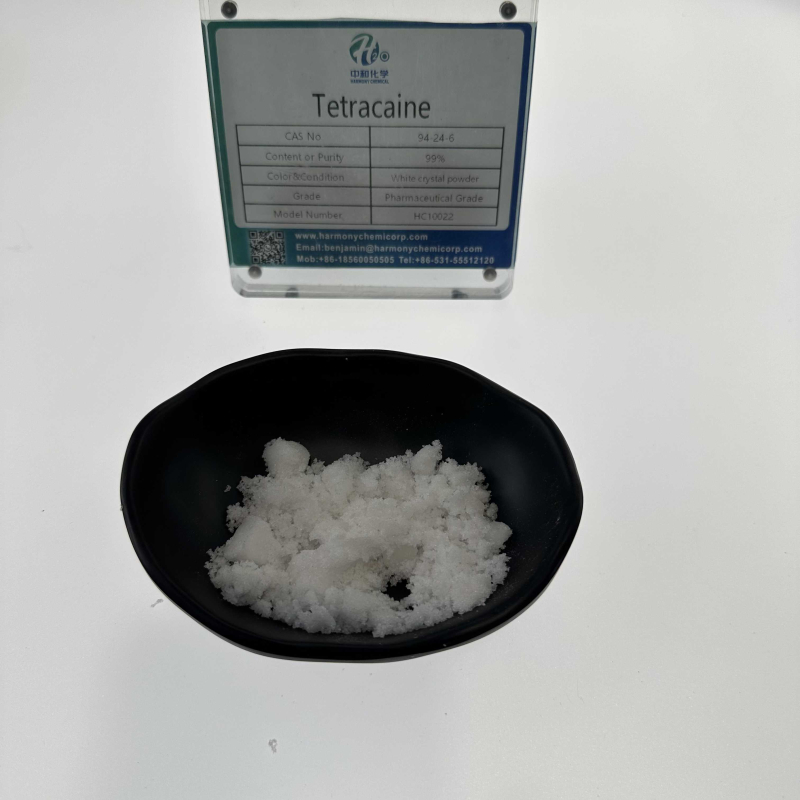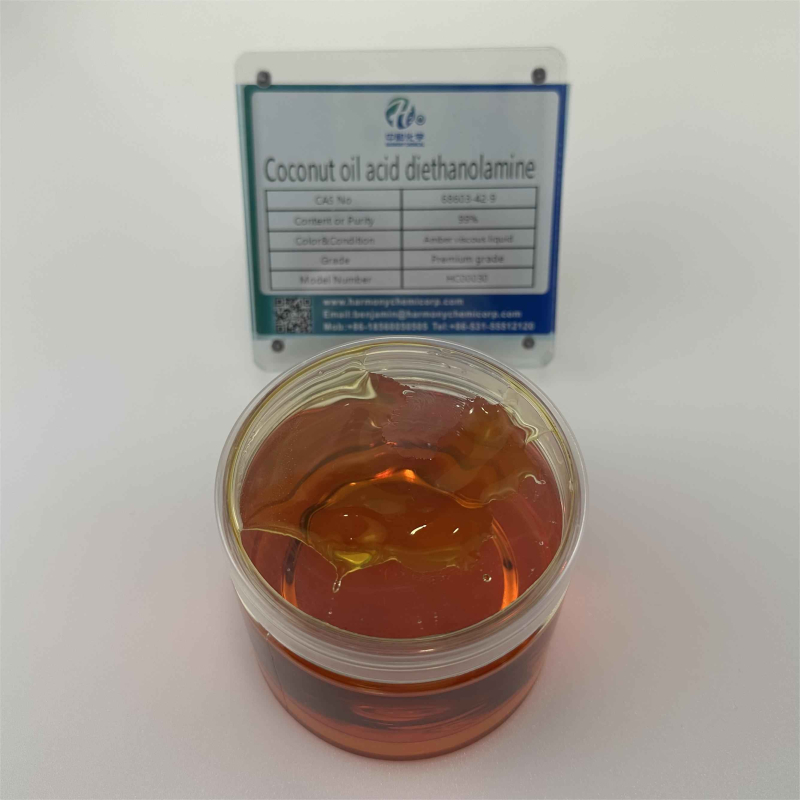N-methylpyrrolidone is referred to as NMP, molecular formula: C5H9NO, English: 1-Methyl-2-pyrrolidinone, the look is colorless to mild yellow obvious liquid, barely with the odor of ammonia, miscible with water in any proportion, soluble in ether, acetone and ester, haloalkane, fragrant hydrocarbon and different natural solvents, nearly totally combined with all solvents, boiling factor 204 ℃, flash factor ninety one ℃, sturdy hygroscopicity, steady chemic
Contact Now
nameEsmolol hydrochlorideCAS NO81161-17-3Molecular formulaC16H26ClNO4molecular weight331.83melting point48-50°Cdensity1.026Storage conditions−20°CsolubilityH2O: soluble12mg/mLformbuffered aqueous solutioncolourWhite to Off-White
Contact Now
nameLinocaine hydrochlorideCAS NO6108-05-0Molecular formulaC14H25ClN2O2molecular weight288.82melting point75-79℃Storage conditions2-8°CsolubilityH2O: solubleformsolidcolourwhiteSOLUBLESoluble in water (50 mg/ml), chloroform, ethanol, and benzene. Insoluble in diethyl ether.
Contact Now
Melting Point180-185 °C(lit.)Density1.18 g/mL at 25 °C(lit.)Refractivityn20/D 1.465Storage Conditionsroom tempSolubilityH2O: 6 M, clear, colorlessFormCrystalsColourWhite to slightly yellowPh Value4.5-5.5 (100g/l, H2O, 20℃)1. It can be used as an intermediate in medicine, pesticides, dyes, and different natural synthesis.
Contact Now
nameTetracaineCAS NO94-24-6Molecular formulaC15H24N2O2molecular weight264.36melting point41.0 to 45.0 °Cboiling point407.59°C (rough estimate)Storage conditions2-8°CAcidity coefficientpKa 8.33±0.03(H2O
t = 20.0
I = 0.10 (KCl)) (Uncertain)formpowder to crystalcolourWhite to Almost whiteIntroduction: Dicaine is a white crystalline or crystalline powder, odorless, slightly bitter in taste, and has a tingling sensation. Soluble in water, soluble in ethanol, insoluble in ether or benzene.
Contact Now
Manganese carbonate, additionally acknowledged as manganese carbonate, has the chemical components MnCo3. Molecular weight 114.95. White hexagonal crystal or rose purple crystal. Specific gravity 3.125. Difficult to dissolve in water, soluble in dilute acids. Decompose in boiling water. At a hundred ℃, it decomposes into carbon dioxide and manganese oxide, and above 330 ℃, it decomposes to launch carbon dioxide and carbon monoxide. Roasting in air produces manganese trioxide. Roasting in oxygen generates manganese trioxide.
Contact Now
Epidural AdministrationofRopivacainehydrochloride monohydrate effectivelyblockneuroethicpain(bothmechanicalallodyniaandheathyperalgesia)withoutinductionfanalgesictoleranceandsignificantlydelaystheevelopment ofneuropathicpain producedbyperipheral nervenjury.Ropivacainehydrochloride inhibitionpressure-inducedincreasesinfiltrationcoefficient(Kf)withoutaffectingpulmonaryarterypressure (Ppa), Pulmonary capillary pressures(Ppc),andzonalcharacteristics(ZC).Ropivacaine hydrochloride monohydrate preventspressure-induced lungedemansociatedhyperpermeability yasevidencebymaintainingPaO2,lungwet-to-dryrati
Contact Now
Density: 1.10g/cm3Melting point: 107-108 ℃Steam pressure: 49.8mm Hg at 25 ° CAppearance: Orange crimson crystalline powderSolubility: without difficulty soluble in water and ethanol, nearly insoluble in targeted nitric acidAmmonium cerium nitrate (abbreviated as CAN) is a robust oxidant with enhanced oxidizing homes underneath acidic conditions, 2nd solely to F2, XeO3, Ag2+, O3, and HN3.
Contact Now
namePrussian BlueCAS NO14038-43-8Molecular formulaC6FeN6.4/3Femolecular weight859.23density1.8Storage conditionsRoom TemperatureformPowderSOLUBLEpractically insolublesensitivenessHygroscopicstabilityStable. Incompatible with strong acids, strong oxidizing agents, ammonia. Light sensitive.
Contact Now
nameMK-4827 (tosylate)CAS NO1038915-73-9Molecular formulaC26H28N4O4Smolecular weightmolecular weightmelting point>142oC (dec.)Storage conditions-20°C FreezersolubilityMethanol (Slightly)formformcolourOff-White to Pale Yellow
Contact Now
nameTopiroxostatCAS NO577778-58-6Molecular formulaC13H8N6molecular weight248.24boiling point594.7±60.0 °C(Predicted)density1.45±0.1 g/cm3(Predicted)Storage conditionsStore at -20°CsolubilityDMSO : 23.5 mg/mL (94.67 mM; Need ultrasonic and warming)Acidity coefficient (pKa)7.47±0.10(Predicted)formPowder
Contact Now
nameAmitrazCAS NO33089-61-1Molecular formulaC19H23N3molecular weight293.41melting point86-87°Cboiling point425.25°C (rough estimate)density1.1280Storage conditionsSealed in dry,Store in freezer, under -20°CformPowder/SolidcolourWhite
Contact Now
Tetracaine hydrochloride is used for mucosal floor anesthesia, conduction anesthesia, epidural anesthesia, and subarachnoid anesthesia; Used for ophthalmic floor anesthesia, barring constricting blood vessels, detrimental corneal epithelium, and growing intraocular pressure.nameTetracaine hydrochlorideCAS NO136-47-0Molecular formulaC15H25ClN2O2melting point149°Cdensity1.1279 (rough estimateStorage conditions2-8°Csolubilityalcohol: solublesoluble 40 parts of solventformneatcolourWhite to Almost whiteSOLUBLESoluble in water at 50mg/ml
Contact Now
nameUrapidil hydrochlorideCAS NO64887-14-5Molecular formulaC20H30ClN5O3molecular weight423.94melting point156-1580CStorage conditionsKeep in dark place,Inert atmosphere,Room temperaturesolubilityH2O: solubleformsolidcolourwhiteSOLUBLESoluble to 50 mM in water
Contact Now
namePramoxine hydrochlorideCAS NO637-58-1Molecular formulaC17H28ClNO3molecular weight329.86melting point181-183°Storage conditionsInert atmosphere,Room TemperaturesolubilityChloroform (Slightly), Methanol (Slightly)formneatcolourWhite to Off-White
Contact Now
Boiling Point168-274 ° COdorat 100.00?%. mild ammoniaSOLUBLE5-10 g/100 mL at 18 ºCStabilityStable. Combustible. Incompatible with strong oxidizing agents.Introduction: N, N-bis (hydroxyethyl) coconut oil amide can be used as a surfactant.
Contact Now
nameFlubendazoleCAS NO31430-15-6Molecular formulaC16H12FN3O3molecular weight313.28melting point290°CStorage conditions2-8°Cdensity1.3720Acidity coefficient10.66±0.10formneatcolourWhite to Off-White
Contact Now
Mainly used in PVC molding methods such as rolling, injection, blow molding, and extrusionAs a catalyst, the paint and coating comprise DBT compounds; Soft polyvinyl chloride (PVC) profiles, whether or not they are gentle or extruded collectively with challenging PVC; Outdoor fabric are included with PVC containing DBT compounds as stabilizers on their surfaces;Pipes, drainage ditches, and home equipment used for out of doors rainwater, as nicely as protecting substances
Contact Now
Polyvinylpyrrolidone, additionally recognised as PVP, is a polymer of ethylene pyrrolidone. Due to its one-of-a-kind ranges of polymerization, it can be divided into soluble PVP and insoluble PVPP (polyvinylpyrrolidone). The relative molecular weight of soluble PVP is 8000~10000, which can be used as a precipitant to precipitate with the aid of reacting with polyphenols. By the use of this method, there are without problems residual PVP in the wine.
Contact Now
nameL-carnitineCAS NO541-15-1Molecular formulaC7H15NO3molecular weight161.2melting point197-212 °C(boiling point287.5°CStorage conditionsStore below +30°C.formCrystals or Crystalline PowdercolourWhitepH value6.5-8.5 (50g/l, H2O)
Contact Now
Bisphenol A polyoxyethylene ether is a chemical with the chemical system C15H16O2. (C2H4O) n.Boiling point350 ℃ [at one hundred and one 325 Pa]Density1.18 g/mL at 25 ° CVapor pressure0Pa at 25 ℃Refractive indexn20/D 1.552Flash point230 ° FWater solubility697mg/L at 20 ℃
Contact Now
nameLevamisole hydrochlorideCAS NO16595-80-5Molecular formulaC11H13ClN2Smolecular weight240.75melting point266-267 °Cflash point9℃Storage conditions2-8°Crefractivity-126 ° (C=1, H2O)formCrystalline PowdercolourWhite to almost white
Contact Now
Polyvinylpyrrolidone, additionally acknowledged as PVP, is a polymer of ethylene pyrrolidone. Due to its unique ranges of polymerization, it can be divided into soluble PVP and insoluble PVPP (polyvinylpyrrolidone). The relative molecular weight of soluble PVP is 8000~10000, which can be used as a precipitant to precipitate by way of reacting with polyphenols. By the usage of this method, there are effortlessly residual PVP in the wine.
Contact Now
nameLOXO-292CAS NO2152628-33-4Molecular formulaC29H31N7O3molecular weight525.6density1.36±0.1 g/cm3(Predicted)Storage conditionsStore at -20°CformA crystalline solidAcidity coefficient (pKa)14.00±0.29(Predicted)
Contact Now





























